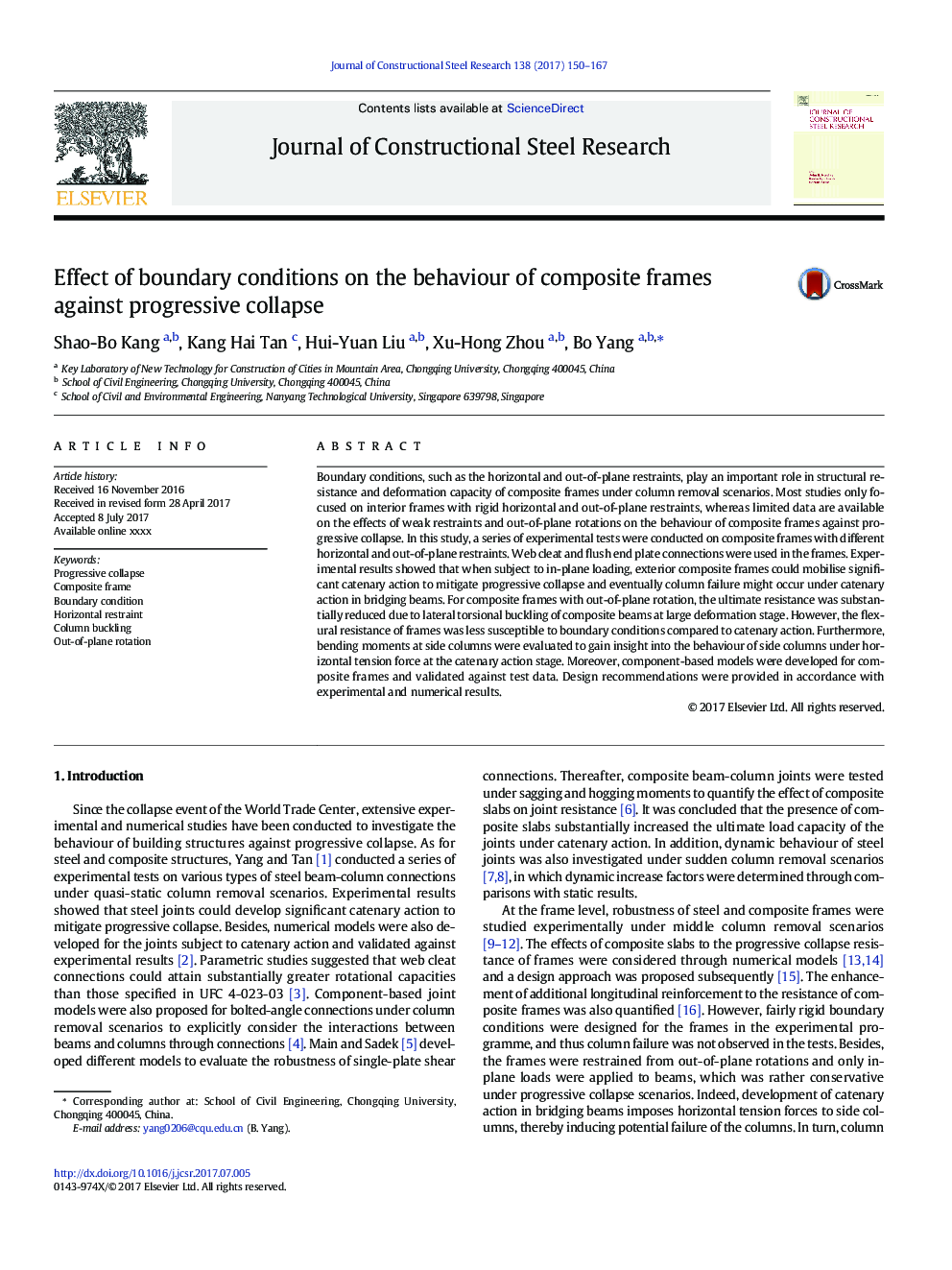| Article ID | Journal | Published Year | Pages | File Type |
|---|---|---|---|---|
| 4923307 | Journal of Constructional Steel Research | 2017 | 18 Pages |
Abstract
Boundary conditions, such as the horizontal and out-of-plane restraints, play an important role in structural resistance and deformation capacity of composite frames under column removal scenarios. Most studies only focused on interior frames with rigid horizontal and out-of-plane restraints, whereas limited data are available on the effects of weak restraints and out-of-plane rotations on the behaviour of composite frames against progressive collapse. In this study, a series of experimental tests were conducted on composite frames with different horizontal and out-of-plane restraints. Web cleat and flush end plate connections were used in the frames. Experimental results showed that when subject to in-plane loading, exterior composite frames could mobilise significant catenary action to mitigate progressive collapse and eventually column failure might occur under catenary action in bridging beams. For composite frames with out-of-plane rotation, the ultimate resistance was substantially reduced due to lateral torsional buckling of composite beams at large deformation stage. However, the flexural resistance of frames was less susceptible to boundary conditions compared to catenary action. Furthermore, bending moments at side columns were evaluated to gain insight into the behaviour of side columns under horizontal tension force at the catenary action stage. Moreover, component-based models were developed for composite frames and validated against test data. Design recommendations were provided in accordance with experimental and numerical results.
Related Topics
Physical Sciences and Engineering
Engineering
Civil and Structural Engineering
Authors
Shao-Bo Kang, Kang Hai Tan, Hui-Yuan Liu, Xu-Hong Zhou, Bo Yang,
